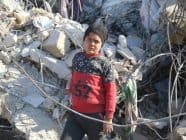A new study finds that despite the media’s role as a primary information source during natural disasters, most of the news provided is too current and region specific to be useful for audiences. The study, done by J. Brian Houston and Cathy Ellen Rosenholtz from the University of Missouri and Betty Pfefferbaum from the University of Oklahoma, reports that U.S. media coverage has the tendency to cover natural disasters for shorter periods of time than other disasters, such as technological (chemical spills) or manmade disasters (such as a terrorist attacks). To collect their data, researchers examined articles from the three U.S. newspapers with the highest national circulation rates, The Wall Street Journal, USA Today, and the New York Times, in addition to two national broadcasts, the ABC World News and the CBS Evening News.
The report identified several stages that take place during a natural disaster, with the media’s role within those stages ideally beginning by communicating potential threats, advising on how best to secure homes and buildings, and lastly by providing information to citizens about how best to prepare for the disaster. Yet the study indicates that while the media’s ability to provide warnings and current information on natural disasters is “satisfactory,” their contributions to recovery are, “somewhat disappointing.” According to the report, “disaster news […] includes little coverage of what caused the disaster or what influenced responses to the disaster (the past) and what the disaster will mean for the people and communities experiencing the disaster (the future).” Ultimately this lack of substantive coverage leads to a weaker disaster narrative and possibly to a less prepared audience.
Specifically the study’s authors looked at content by determining particular coverage, space, and time frames for the disaster news reports found in each publication. In total 11 natural disasters were chosen for inclusion in the study, all occurring in the U.S. between 2000 and 2010. In order to control for significance and placement within newspapers, only articles appearing on the front page of each paper were included in the analysis. As stated in the study, news stories typically experience a period of information ebb and flow, releasing new issues and events in accordance with public sentiment, which generally begins high before slowly diminishing. Previous research revealed three common themes that typically arise in disaster news coverage, beginning with the tragic disruption of the daily routine, tales of escape and heroism, and lastly officials working to restore the infrastructure and pinpoint cause and blame.
Within these themes natural disaster reporting is typically focused on the current impact of the disaster, including the cost and damage to the region or population most affected. As a result of these coverage frames, the most likely aspects of a disaster to be covered include the number of people killed or injured by the disaster, and the amount of destruction and damage inflicted by the disaster. Overall the study was able to illustrate the content of coverage over time, while comparing the flow of news coverage as it corresponds to the unfolding of the disaster – ultimately revealing a tendency for national news sources to cover aspects of natural disasters with a focus on the general interest of a large national audience. But just as news coverage changes, so does the disaster management process, and more importantly the needs of survivors as the disaster unfolds. “What happens and is needed in the first few days of a disaster may not be what happens or is needed several months later,” explains the study’s authors. “Overall then, the amount of time since a disaster occurred will influence the current needs, activities, and concerns of individuals and a community experiencing a disaster.”
Houston, B. J., Pfefferbaum, B., Rosenholtz, E. (2012). Disaster News: Framing and Frame Changing in Coverage of Major U.S. Natrual Disasters, 2000-2010. Journalism and Mass Communication Quarterly 89, 4 606-620
Photo credits: wallyg / Flickr CC
Tags: ABC World, CBS, Disaster Coverage, Journalism and Mass Communication Quarterly, Natural Disasters, Sandy, The New York Times, the Wall Street Journal, University of Missouri, University of Oklahoma, USA Today












































